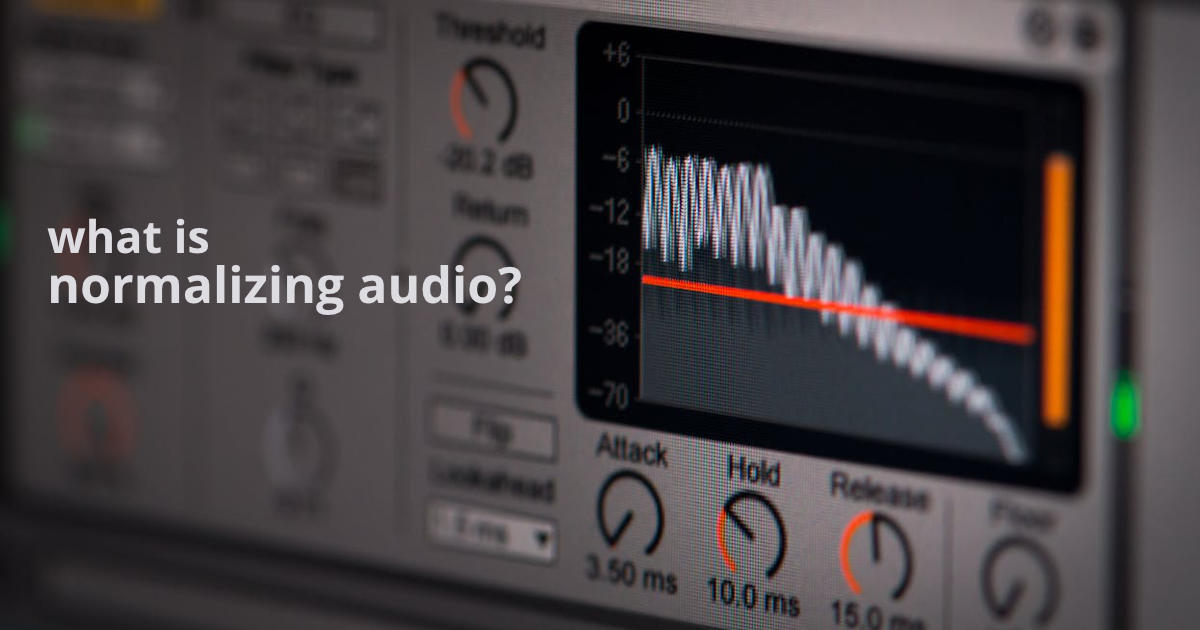Estimated reading time: 9 minutes
Introduction to Audio Normalization
Audio normalization is a crucial process in the world of audio engineering. It involves adjusting the volume levels of audio files to ensure consistent playback across different devices and platforms. Whether you are a professional sound engineer or an aspiring podcaster, understanding the concept of audio normalization is essential to deliver high-quality audio content.
Table of contents
- Understanding Peak Normalization
- The Importance of Audio Normalization
- Different Methods of Audio Normalization
- Normalizing Audio Files
- The Role of Digital Audio in Normalization
- Loudness Normalization and Dynamic Range
- Normalizing Peak Levels and Volume Levels
- Maximum Volume and Its Impact on Audio Quality
- Tools and Software for Audio Normalization
- Common Misconceptions About Audio Normalization
- Conclusion
- FAQ
Understanding Peak Normalization
One of the primary methods of audio normalization is peak normalization. This technique focuses on adjusting the peak levels of an audio file to a desired target level. Peaks refer to the highest points of audio signals, representing moments of maximum volume. By normalizing peak levels, you can ensure that the loudest parts of your audio don’t clip or distort, while maintaining the overall dynamics of the sound.
Peak normalization is typically measured in decibels (dB). It allows you to control the maximum volume of your audio file, preventing any inconsistencies in playback volume. By bringing the peak levels to a standardized level, you can ensure that your audio will sound consistent regardless of the playback device or platform.
The Importance of Audio Normalization
Audio normalization plays a vital role in enhancing the listening experience for your audience. When audio files are not properly normalized, listeners may struggle to hear certain parts due to low volume or be overwhelmed by sudden spikes in volume. By normalizing audio, you create a balanced and pleasant listening experience, allowing your audience to fully engage with your content.
Additionally, audio normalization is crucial when multiple audio files are combined, such as in a podcast or a music album. If these files have varying volume levels, it can be jarring for the listener to experience constant changes in volume. Normalizing the audio ensures a seamless transition between different tracks, resulting in a professional and polished production.
Different Methods of Audio Normalization
There are various methods of audio normalization, each serving different purposes based on the specific needs of your audio files. Some common methods include peak normalization, RMS normalization, and loudness normalization.
Peak normalization, as discussed earlier, focuses on adjusting the highest points of an audio signal. RMS normalization, on the other hand, considers the average volume of the entire audio file. This method calculates the Root Mean Square (RMS) value, which represents the overall energy of the audio signal. Loudness normalization, as we will explore later, takes into account the perceived loudness of the audio, ensuring a consistent listening experience.
Choosing the appropriate method of normalization depends on the nature of your audio files and the desired outcome. Experimenting with different methods can help you achieve the best results for your specific audio content.
What is autotune in music? The Rise and Influence of Autotune in the Music Industry
Normalizing Audio Files
To normalize audio files, you can utilize various software applications specifically designed for audio editing and processing. These tools provide a range of features and options to adjust the volume levels of your audio files.
One popular software for audio normalization is Adobe Audition. With its intuitive interface and powerful tools, you can easily normalize your audio files with precision. Audacity is another widely used free software that offers normalization capabilities. It provides a straightforward approach to normalizing audio, making it accessible to beginners and professionals alike.
When normalizing audio files, it’s crucial to strike a balance between achieving consistent volume levels and preserving the dynamic range of the sound. Over-normalizing can result in a loss of dynamics, making the audio sound flat and lifeless. It’s important to use your ears as a guide and make adjustments accordingly to maintain the integrity of the original audio.

The Role of Digital Audio in Normalization
In today’s digital age, the majority of audio content is consumed in digital formats. This shift from analog to digital has brought about advancements in audio normalization techniques and capabilities. Digital audio normalization allows for precise adjustments and greater control over the volume levels of audio files.
Digital audio normalization takes advantage of the digital signal processing capabilities of modern devices. It allows for real-time adjustments, ensuring consistent playback across different platforms and devices. Additionally, digital audio normalization enables the use of algorithms and algorithms to analyze and optimize the audio signal, resulting in improved quality and a better listening experience.
What Do DJs Wear During Their Performances?
Loudness Normalization and Dynamic Range
Loudness normalization is a method that aims to ensure consistent perceived loudness across different audio files. It takes into account the human perception of volume and adjusts the audio accordingly. This method is particularly useful in scenarios where the dynamic range of the audio varies significantly.
Dynamic range refers to the difference between the quietest and loudest parts of an audio signal. It adds depth and richness to the audio, allowing for a more immersive listening experience. However, a wide dynamic range can sometimes be challenging for listeners, especially when played back on devices with limited dynamic capabilities. Loudness normalization addresses this issue by reducing the dynamic range while maintaining the overall loudness.
By applying loudness normalization, you can create a more consistent listening experience, ensuring that your audio is accessible and enjoyable to a wider audience.
What is Overdubbing? The Role of Overdubbing in Music Production
Normalizing Peak Levels and Volume Levels
When it comes to audio normalization, it’s important to differentiate between normalizing peak levels and volume levels. While peak normalization focuses on adjusting the highest points of an audio signal, volume normalization aims to balance the overall volume of an audio file.
Normalizing peak levels prevents clipping and distortion during playback, ensuring that the loudest parts of your audio remain within an acceptable range. On the other hand, volume normalization addresses the overall volume of the audio, making sure that it is consistent and balanced throughout.
Both peak level normalization and volume level normalization are essential in achieving high-quality audio. By combining these techniques, you can create a well-balanced and professional sound that captivates your audience.
Maximum Volume and Its Impact on Audio Quality
One important aspect to consider in audio normalization is the maximum volume level. While it may be tempting to push the volume to the maximum to achieve a louder sound, it’s crucial to exercise caution.
Pushing the volume to its limits can result in distortion and compromise the overall audio quality. When an audio signal exceeds the maximum volume level, it becomes clipped and loses fidelity. It’s important to find the right balance between volume and quality, ensuring that your audio remains clear and free from distortion.
By normalizing audio to a suitable target level, you can avoid excessive volume levels that may negatively impact the listening experience. Remember, it’s not just about being loud, but about delivering high-quality audio that resonates with your audience.
Tools and Software for Audio Normalization
As mentioned earlier, there are various tools and software applications available for audio normalization. Here are a few notable options:
- Adobe Audition: A professional software widely used in the audio industry, offering powerful normalization features.
- Audacity: A free and open-source software that provides a user-friendly approach to audio normalization.
- Izotope RX: A comprehensive audio editing suite with advanced normalization capabilities and intelligent algorithms.
- Steinberg WaveLab: A professional audio editing software that offers a range of normalization options and precise control over volume levels.
These tools provide a range of features and options to suit different needs and expertise levels. Whether you are a beginner or an experienced professional, there is a tool out there to help you achieve optimal audio normalization.
In addition to software, studio monitors are also recommended for the perfect listening experience. Learn here what are studio monitors?
Common Misconceptions About Audio Normalization
Despite its importance, audio normalization is often surrounded by misconceptions. Let’s address some of the common misconceptions and clarify the facts:
- “Normalization makes all audio sound the same”: While normalization ensures consistent volume levels, it does not eliminate the unique characteristics of each audio file. It simply balances the volume to provide a more enjoyable listening experience.
- “Normalization reduces the quality of audio”: When done correctly, audio normalization should not compromise the quality of the audio. It’s important to use appropriate tools and techniques to preserve the integrity of the original sound.
- “Normalization is only necessary for music”: Audio normalization is beneficial for all types of audio content, including podcasts, audiobooks, and videos. It ensures that the content is accessible and enjoyable to a wider audience.
By debunking these misconceptions, we can appreciate the true value and benefits of audio normalization.
| Information | Summary |
|---|---|
| Question / Topic | What is Normalizing Audio? Everything You Need to Know |
| Purpose of Audio Normalization | Ensure consistent volume levels for better listening. |
| Common Methods | Peak, RMS, and Loudness normalization. |
| Importance | Enhances listening experience, ensures balance. |
| Software Tools | Adobe Audition, Audacity, Izotope RX, Steinberg WaveLab |
| Balance in Normalization | Maintain volume consistency while preserving dynamics. |
| Maximum Volume Caution | Avoid excessive volume to prevent distortion. |
| Misconceptions | Debunked: Doesn’t make all audio sound the same; should not reduce quality; not limited to music. |
Conclusion
In conclusion, audio normalization is a fundamental process in the world of audio engineering. It ensures consistent volume levels, enhances the listening experience, and allows for seamless transitions between audio files. Understanding the different methods of audio normalization, such as peak normalization and loudness normalization, is crucial in achieving optimal results.
By utilizing the right tools and software, you can normalize your audio files with precision and maintain the integrity of the original sound. Remember to strike a balance between achieving consistent volume levels and preserving the dynamic range of the audio.
With audio normalization, you can deliver high-quality audio content that captivates and engages your audience. So, embrace the power of normalization and elevate your audio production to new heights.
FAQ
Audio normalization’s primary purpose is to ensure consistent volume levels across audio files. It prevents excessively loud or quiet portions, making the listening experience more enjoyable and balanced on various devices.
Yes, there are various methods, including peak normalization (focusing on the loudest parts), RMS normalization (considering the overall average volume), and loudness normalization (adapting to human perception of volume).
When done correctly, audio normalization should not compromise quality. It balances volume while preserving the audio’s integrity. Over-normalization can lead to quality issues, so finding the right balance is essential.
No, audio normalization benefits all audio content, such as podcasts, audiobooks, and videos. It ensures accessibility and a pleasant listening experience, regardless of the type of content.
You can use various tools, including Adobe Audition (professional software), Audacity (free and user-friendly), Izotope RX (advanced suite), and Steinberg WaveLab (precise control). The choice depends on your needs and expertise level.
